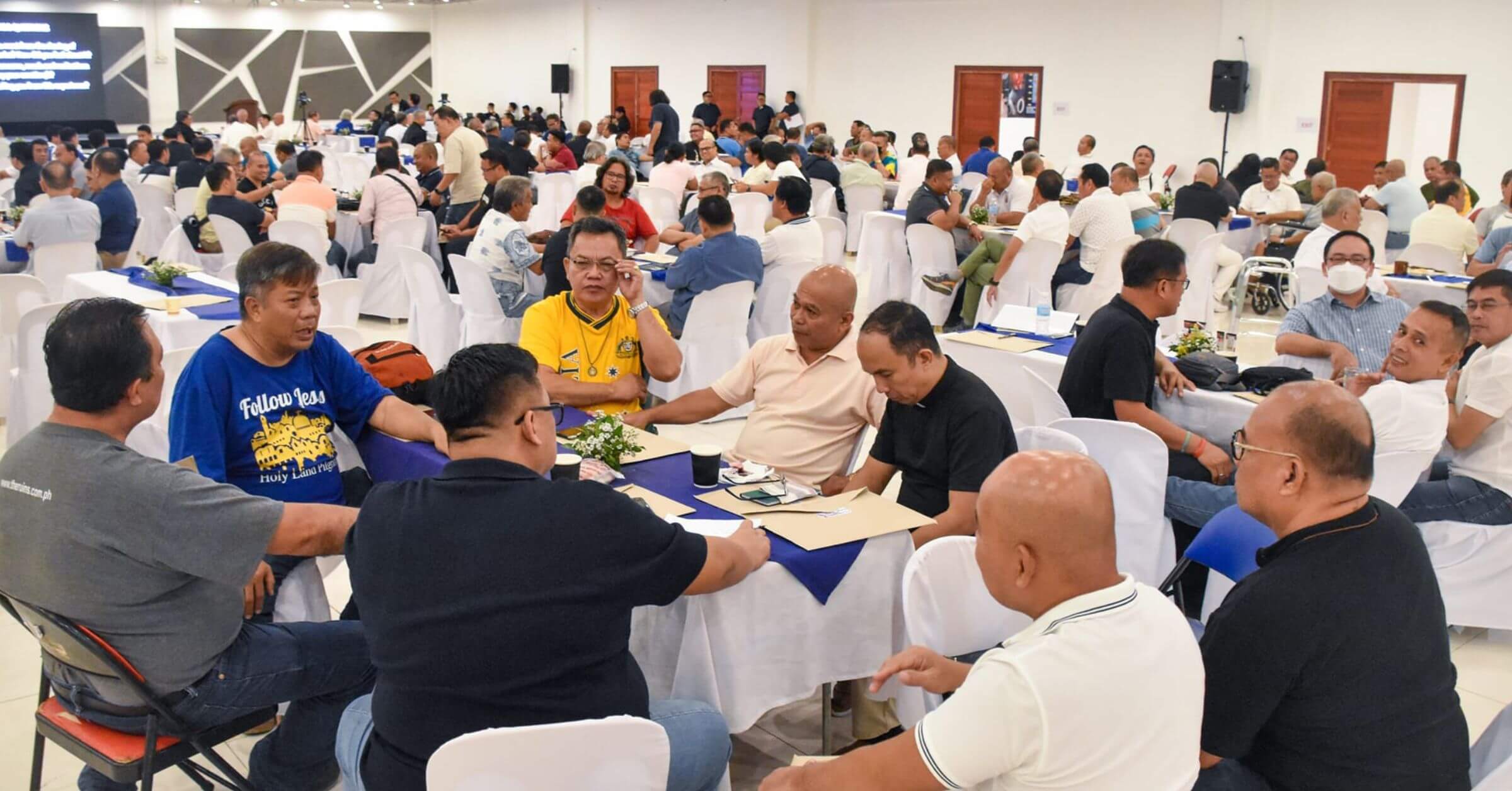The division of the Archdiocese of Cebu into three new territories should be centered on better pastoral management and not rushed to serve as a legacy for a retiring archbishop. It should also happen only after extensive study and wide consultations, said some priests interviewed for this article.
The Archdiocese of Cebu held a clergy gathering last Sept. 19 at the IC3 Convention Center in Cebu City to present the study on Sugbuswak, the move to split the archdiocese into the Archdiocese of Cebu-Central, Diocese of Cebu-South, and Diocese of Cebu-North.
The name Sugbuswak is a combination of the words Sugbu, Cebuano for Cebu; sugwak, which means to gush “like the blood and water from the pierced side of Christ,” and buswak, Cebuano for “to blossom.”
The move comes 21 years after the Cebu Archdiocesan Priests’ Congress on August 20, 2002 in Ecotech Center in Lahug, Cebu City that had among its recommendations the conduct of a study “on the viability and practicality of partitioning the Archdiocese into three.”
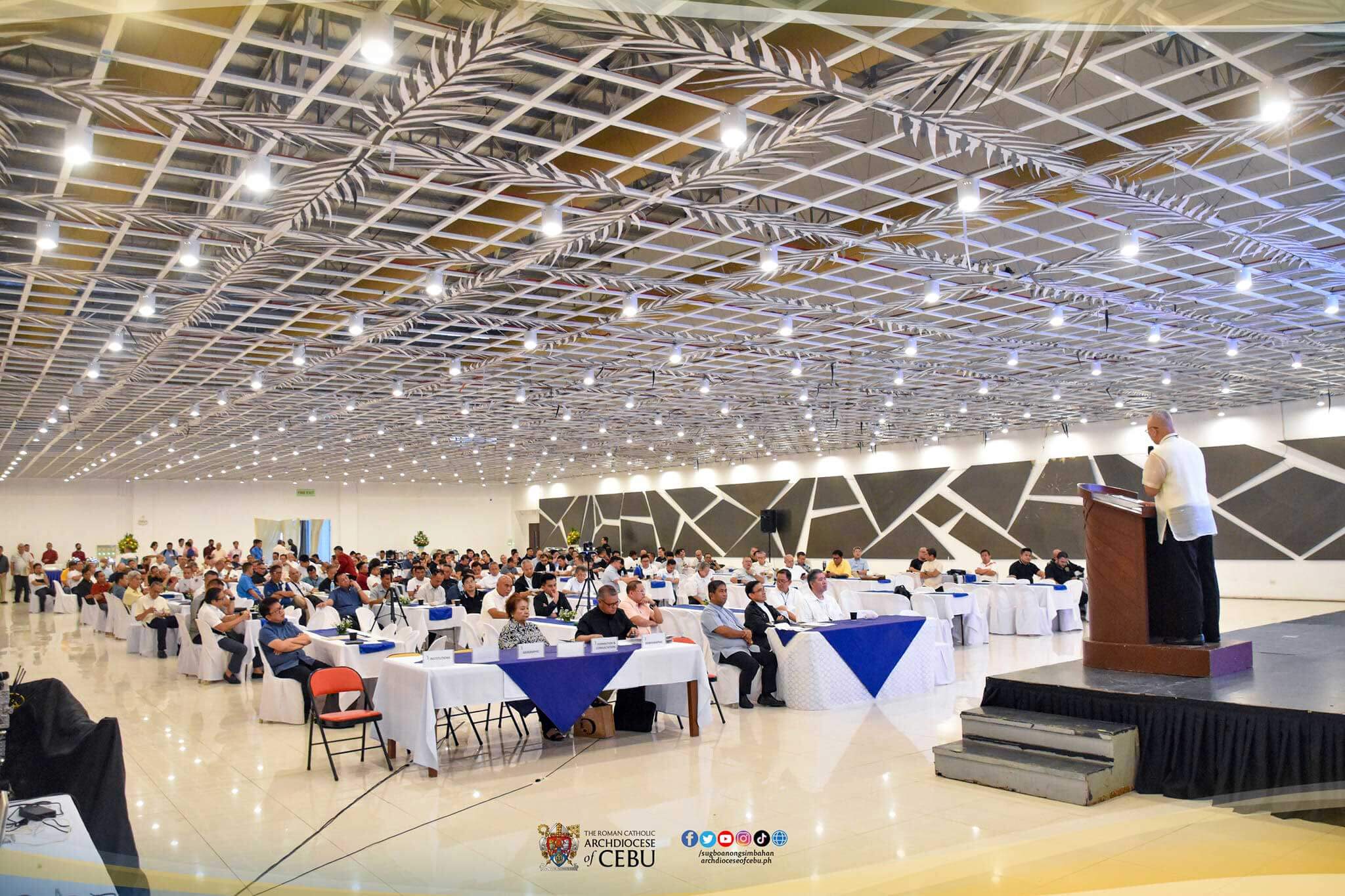
Impetus from Vatican
“This dream, the idea of the division, was floated 20 years ago. It cannot float for another 20 years if there’s no timeline,” Cebu Archbishop Jose S. Palma said in an interview for the Cebu Caritas online program streamed on Facebook last January 19, 2023.
Retired Auxiliary Bishop-Emeritus Emilio Bataclan said talks of breaking up the archdiocese started even as early as the time of the late Cardinal Julio Rosales, who was archbishop of Cebu from 1949 to 1982. Bataclan said that in 2004, the late Cebu Archbishop Ricardo Cardinal Vidal gave him the minutes of the meeting of Visayan bishops where future changes on territories were discussed. Vidal asked him to study the document and give recommendations. Bataclan said he recommended four territories but the papers are with the files of the late cardinal.
Palma said during the January interview that the nuncio had asked him several times in past years when he would be submitting a proposal to break up the Archdiocese of Cebu. He answered that he would focus on the process after the celebration of the 500th Year of Christianity (YOC) in 2021.
The document included as part of the handout to priests during the Sept. 19 event said the many celebrations in the Archdiocese of Cebu precluded the move to divide the archdiocese: Diamond Jubilee in 2009, Archbishop Palma’s coming to Cebu in 2011, the canonization of the first Visayan saint San Pedro Calungsod in 2012, the 51st International Eucharistic Congress in 2016, 500th YOC in 2021, National Mission Congress in 2021-2022, and Synod on Synodality in 2022.
“The time is ripe,” according to the document, “for the cradle of Christianity to create and nurture new churches once more.”
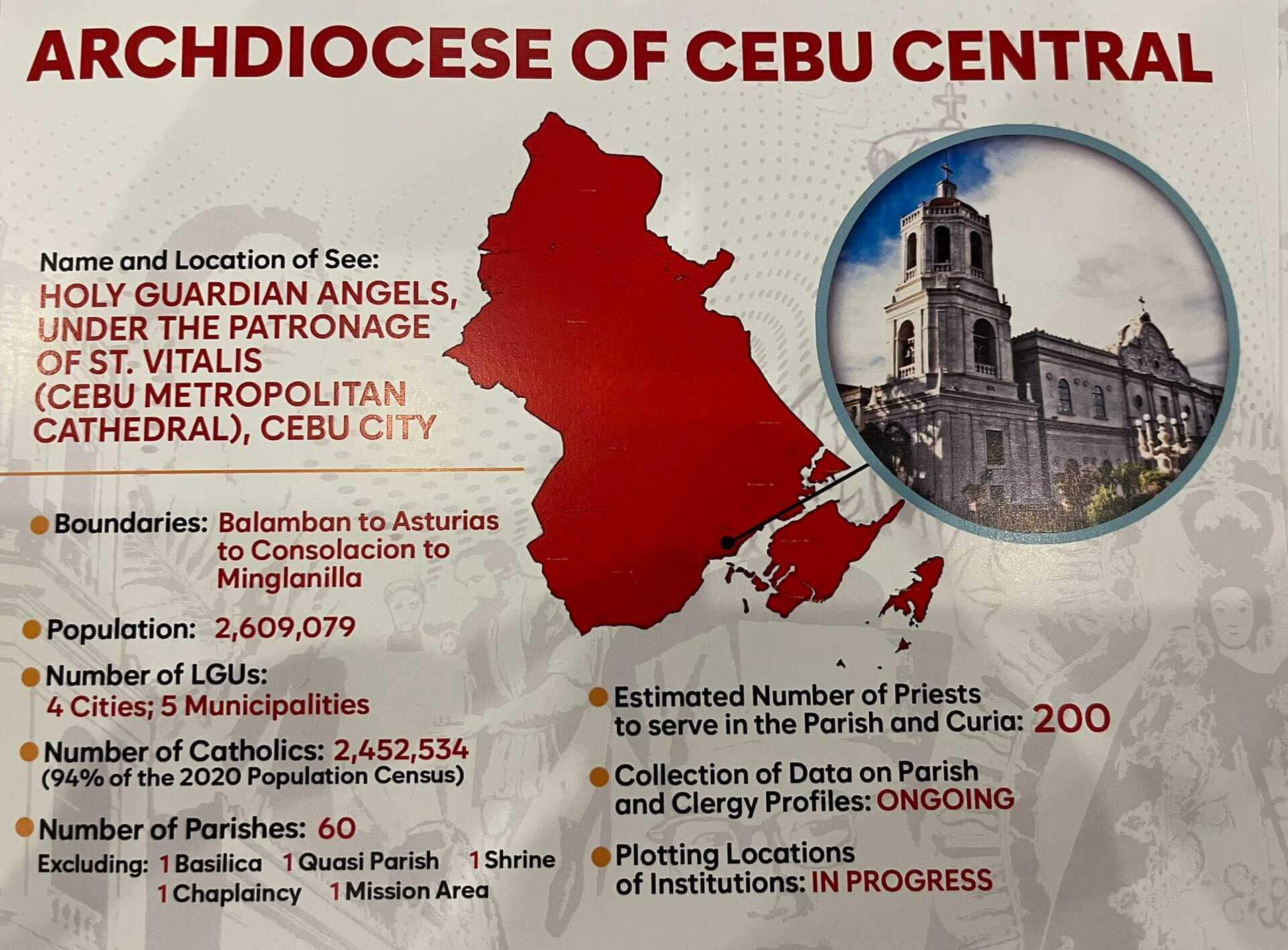
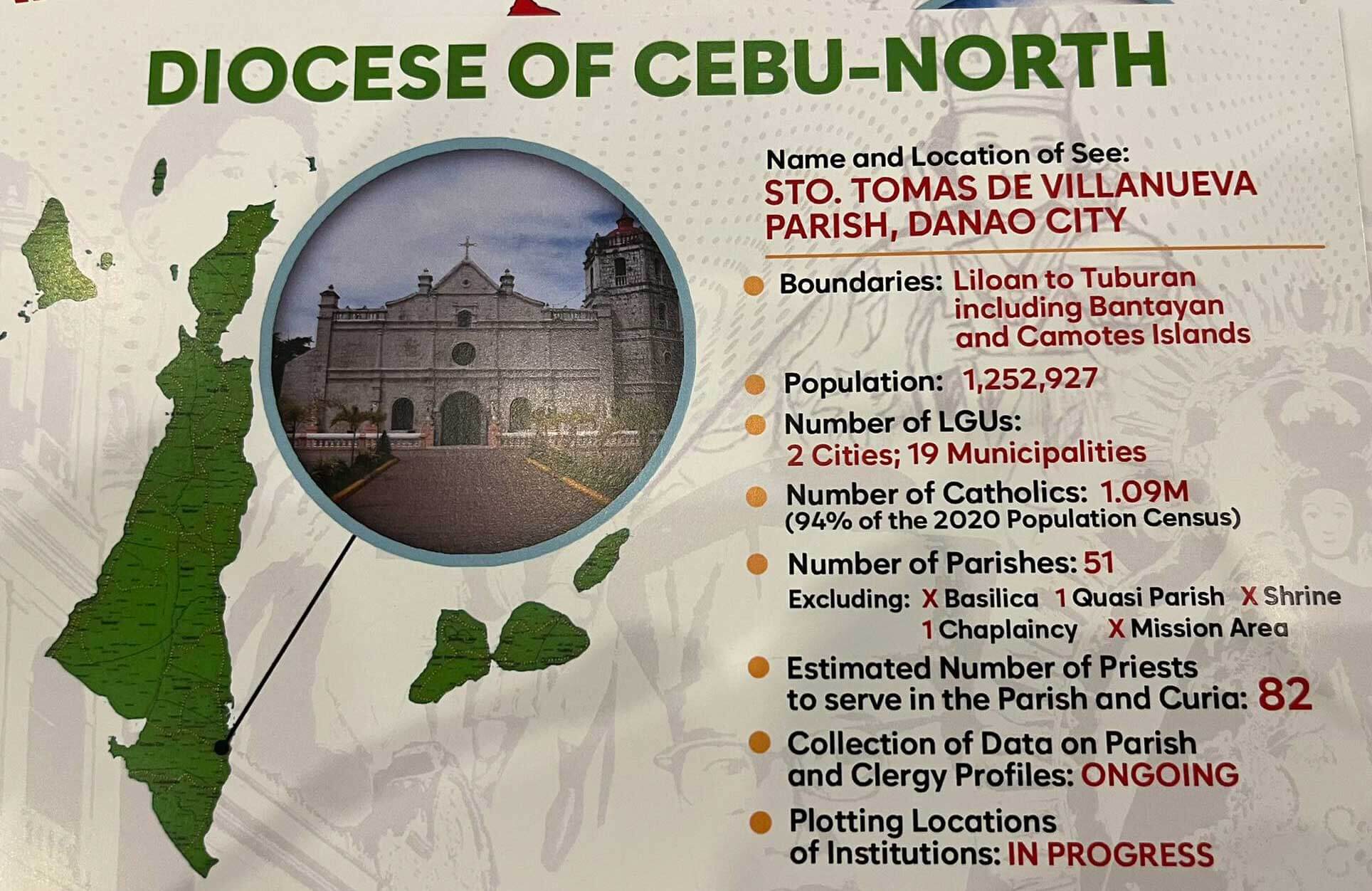
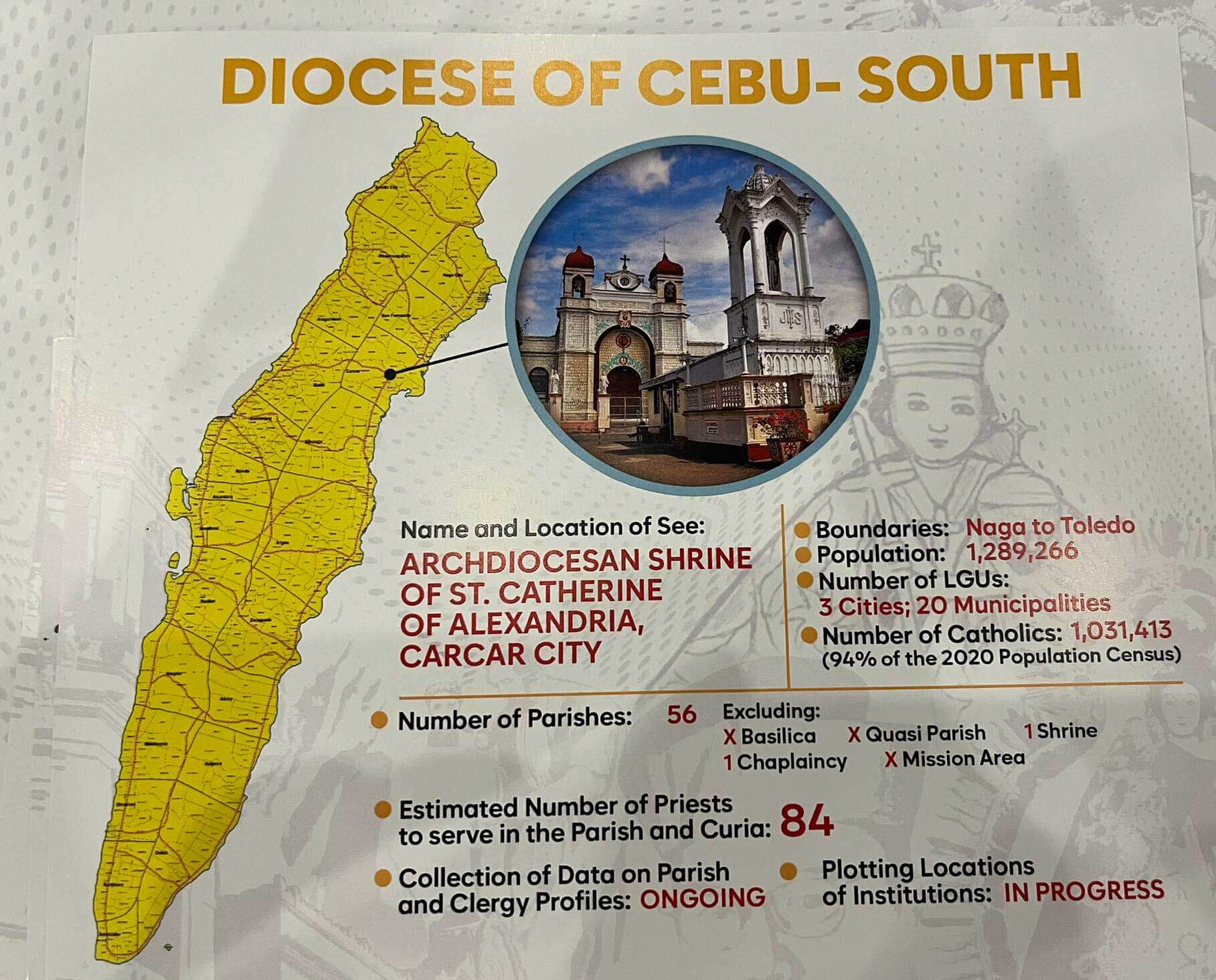
Process to break up Archdiocese of Cebu
The start of the process to break up the Archdiocese of Cebu was announced during a mass last New Year’s Eve by Chancellor Msgr. Renato Beltran Jr.
In July, the Catholic Bishops’ Conference of the Philippines (CBCP) approved the division of the archdiocese during its plenary assembly in Kalibo, Aklan.
During the Day of Prayer and Discernment held last Sept. 19, Palma said in his welcome message that the Sugbuswak study was a “work in progress” and nothing was final. He also said, according to the archdiocese’s official newsletter Bag-ong Lungsoranon, that he planned to submit the documents to the Vatican after the CBCP meeting in January 2024.
What happened in the consultations, according to Fr. Euselito Tulipas, was that officials presented an already “made up” plan even before important questions were asked.
He also said that from what he has been hearing, one framework for the division was to present it “as a legacy of the outgoing archbishop.” Archbishop Palma is turning 75 in 2025, the age when bishops are required to hand in their resignation letter to the Pope.
“Kung muingon ka nga legacy unya naa silay target date nga mao na dayon na nga mahitabo they will encounter problems,” he said in an interview. (If you say it is a legacy and they have a target date for it to happen then they will encounter problems.)
Tulipas, who is the parish priest of the Mary Help of Christians in Buhisan, Cebu City, said there should be detailed and scientific surveys and data gathering on the demographics of Cebu, particularly about the number and status of Catholics. He also said there should be a transparent and extensive study on the finances of the Archdiocese of Cebu.
Tulipas said the implementation of a Standard Living Allowance (SLA) for priests should have come before the breaking up of the archdiocese. That would have helped in clergy assignments, he said.
Audit the archdiocese
“Gawas anang SLA, naa gyud na auditing, naay financial system, naay archdiocesan finance council, naay parish finance council, nga maoy mututok sa realistic figures sa mga parish coffers,” Tulipas said in a phone interview. (Apart from SLA, there should be auditing, there should be a financial system, an archdiocesan finance council, a parish finance council, that can closely look into realistic figures of parish coffers.)
Financial viability of the new territories is among several key concerns raised by a group of priests during the gathering.
During the open forum, Fr. Ver Pedrano said that he thought Cebu was not yet ready to be divided into new territories. He also expressed his hope that priests could be consulted at the district level. This was a sentiment shared by several priests interviewed for this story but who asked to speak anonymously and only to provide background context and information.
Fr. Michael Raypan, whom Bag-ong Lungsoranon identified as representative of the Upper Middle Clergy Group A, also read a position paper listing their concerns on Sugbuswak. The paper, which was distributed to priests during the proceedings, included 5 key issues: 1) dwindling and aging demographics, 2) the historical value of the undivided Archdiocese of Cebu, 3) the contiguous character of the province, 4) the absence of a significant increase in the number of Catholics and clerics, and 5) the incardination and excardination process in the assignment of priests.
The group also requested a parallel study on the viability of keeping the archdiocese as it is.
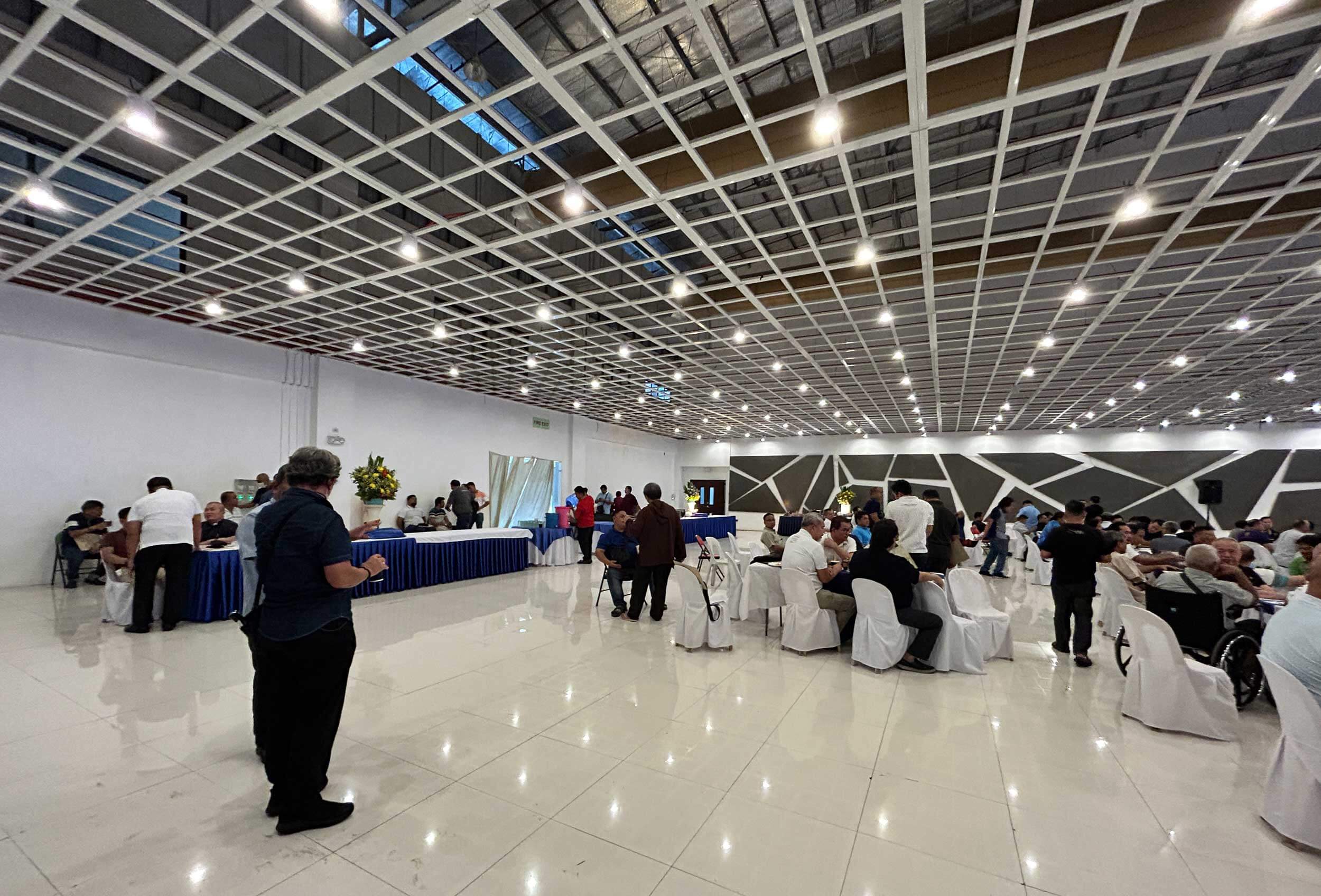
Study keeping Archdiocese as it is
“It is our prayer that we may be given ample time to reflect on the pros and cons of Sugbuswak. It is also our hope that a parallel study be made on the benefits and drawbacks of keeping the Archdiocese of Cebu as one Archdiocese. Allow us to have a free discussion in our districts and challenge us to ask the hard and difficult questions that the variables may be seen and understood. A decision such as this shall not be done in haste,” according to the paper read by Raypan.
Many parishioners still do not know details of the move to break up the archdiocese, said Greta Edith Suarez, a student of Cebu Technological University Main Campus and a social communications volunteer for the Carcar City parish.
“I think that the implementation shouldn’t be rushed,” she said. She described her knowledge of the plan as “just the basics” and even their lay leaders and volunteers do not know much about it.
Fr. Jayson Facunla, Parochial Vicar of the St. James the Apostle Parish in Sogod, said that when he shared on Facebook the flyers with information on the planned new church territories, many people reshared it expressing surprise.
Facunla said there was a need to bring the discussion to the parish level so that the lay would know about the move. He said that what has happened so far was a top-down approach without a bottom-up feedback mechanism. He said it was also important for the church leaders to listen to the sentiments of people. He also said there was a lack of consultation of priests.
A more accessible bishop
During the Cebu Caritas interview, Palma said a key reason for the breakup was pastoral management and being near to the faithful. He cited as an example being invited to say mass in Samboan, a town at the southern tip of Cebu.
“I leave the parish at 6:30 AM then if we run fast enough we could be there around 10 AM. You rest a little bit to celebrate the mass that ends before lunch. You take your lunch and then talk for a short while with the priest, with the people then you head back home,” Palma said. “For only one mass you spend an entire day.”
It’s worse for people who wanted to see the archbishop, Palma said. “I pity them” because of the long travel that they undertake. With a smaller diocese, “the bishop can easily be within their reach.”

